There's nothing like good ventilation, especially when you're sleeping in a small space. Windows are OK, but they don't really compare to a dedicated ventilation fan designed for an RV. A lot of van owners, truck owners with toppers, and SUV owners will cut a hole into their vehicle's roof (or shell top) and install a small ventilation fan.
If you're thinking about installing a fan in your vehicle, you've probably come to learn that there are a lot of options. What we've compiled here is a list of the common, popular models, with specs and pricing information, as well as some general advice about powering a ventilation fan for extend periods.
Fan-Tastic Model 2250
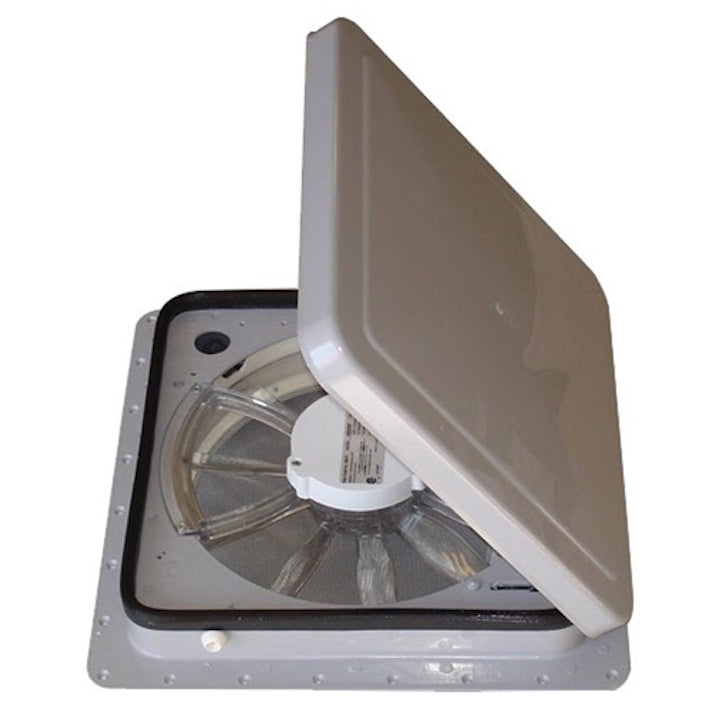
The 2250 is the mid-range 12V fan available from Fan-Tastic. The 1250 - which is only about $20 less - doesn't have the built-in thermostat, while the 3350 is an upgrade that includes a rain sensor and a motorized lid. The 3350 is about $75 more.
2250 Features: Built-in thermostat, 3-speed control, manual opening, fan blows either in or out, clear fan blades allow light in, max 920 CFM (pulls in)
Current Draw: Maximum of 3 amps
Retail Cost: About $175
Website: http://www.fantasticvent.com/
NOTE: Fan-Tastic was acquired by Atwood Mobile in 2010, so Atwood fans are now Fan-Tastic fans
MaxxFan Deluxe
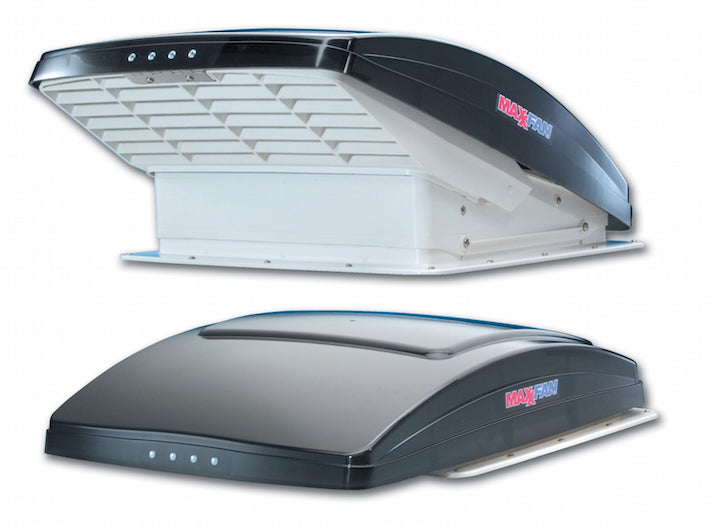
The MaxxFan Deluxe (from Maxxair) is available in a variety of configurations; the fan can be purchased with a 10 speed or 4 speed fan, with or without a rain cover, with a manual or an automated lid, and with or without a remote control. In addition to this array of features, there are also two color options for the lid (white or 'smoke').
Still, despite the myriad of configuration options, this is one of those most popular fans on the market.
MaxxFan Deluxe Features: Intake or exhaust function with 900 CFM flow rate; the fan can be used to pull in or draw out air OR as a circulatory fan
Current Draw: Up to 2.5 amps
Retail Cost: From $200, with some models over $300
Website: http://www.maxxair.com/
Ventline Northern Breeze
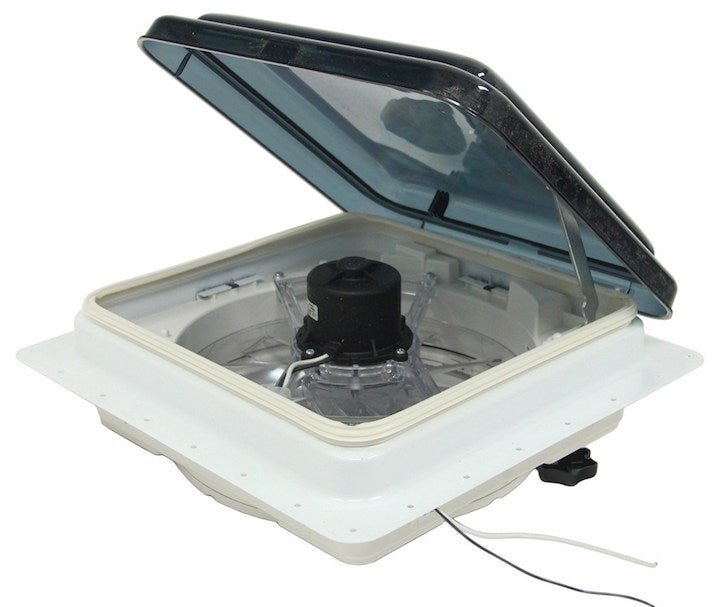
A simple single-speed ventilation fan, the Northern Breeze only offers exhaust functionality, and moves 400 CFM. There are a couple of color options for the cover, and the lid opens and closes manually.
Northern Breeze Features: Single speed, exhaust only, manual lid opening
Current Draw: 1 amp
Retail Cost: From $140
Website: http://ventline.com/
Heng’s Vent Fans
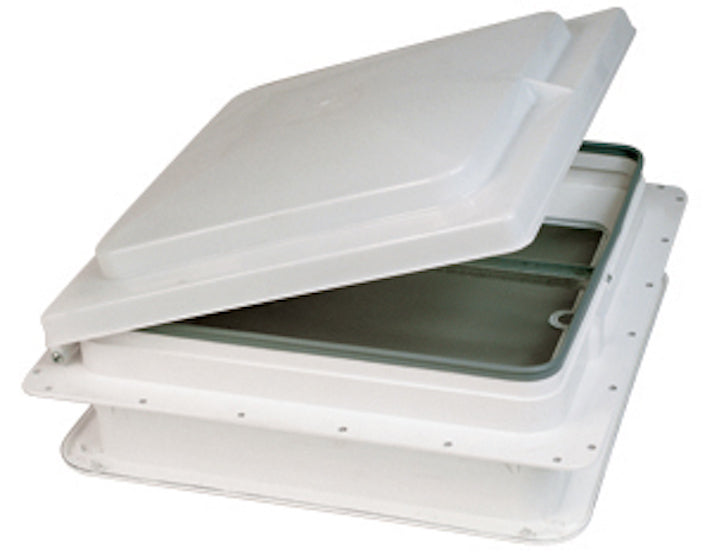
There are a few different Heng's Industries fans - a single speed fan that's exhaust only, a multi-speed fan that's reversible, and a couple of models that have additional features like remotes and automatic lids. However, the most common Heng's fans seem to be the single speed and 3 speed fans. Most of these fans are sold without mounting kits or lids, so expect to buy more for these "extras."
Heng's Fan Features: Everything between a simple single speed and a multi-speed with remotes and automatic lids. CFM rates are unknown (and not published on the Heng's Industries website)
Current Draw: Unknown
Retail Cost: Single-speed fans can be as inexpensive as $50, but with mounting kits and lids, that price can quickly increase. Generally, however, Heng's fans are the least costly fans you can find.
Website: http://www.hengsindustries.com/
What To Know Before Installing and Operating A 12V Ventilation Fan
First, in terms of installation:
- Most fans fit a standard 14" by 14" opening. If you're going to be cutting a hole in your vehicle (or camper shell) to accommodate the fan, that's about the size of the hole you'll need.
- Some fans come with installation kits and some do not. Some fans come with the mounting bracket and lid, and some do not. Make sure you know what you're getting.
- If you're installing a fan in a new opening, be sure to review some online installation articles, like this one from LoveYourRV.com
However, an RV's battery system is not the same as a standard vehicle battery system. Most RVs have dual battery setups, and many have battery banks. As a result, special precautions should be taken when powering a 12V ventilation fan in a standard truck or SUV.
- A fan that only draws 1 amp can typically run off of a normal standard vehicle starter battery for 12-24 hours, as most starter batteries have a 75-100ah rating, and can be discharged 10-20% without issue. But a fan that's cranked up and drawing 3 amps will only be able to run 1/3rd of that time.
- Additionally, if you have any other accessories running off the vehicle battery (like a portable fridge) in addition to the 12V fan, the standard vehicle starter battery is likely to be insufficient for more than a few hours (depending on the fridge and fan speed).
- Many vehicle owners will install a second deep-cycle battery in their vehicles to accommodate the power requirements of ventilation fans, portable fridges, etc. However, we do not recommend dedicated dual battery systems for most vehicles. You can read why here.
- Whatever your secondary power source, it's safe to assume your fan will pull 1-2 amps of current on medium and low speed settings.
For example: Let's say you're running an efficient portable fridge that draws approximately 1amp, a ventilation fan on a medium speed setting that draws 2 amps, and then charging a couple of electronic accessories, and doing so overnight. That works out to about 35ah of battery capacity over an 8-10 hour period.
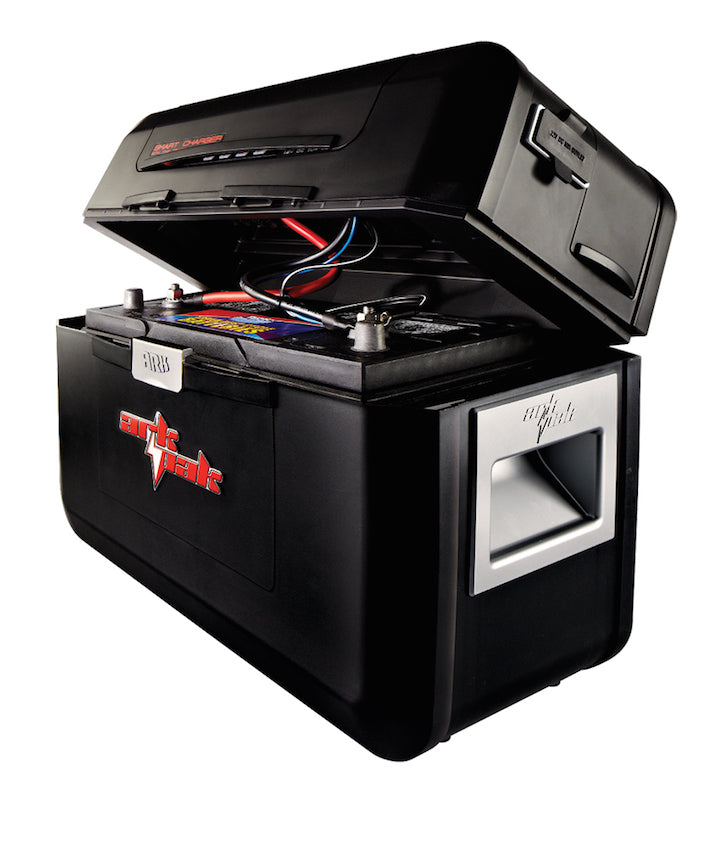
To support that level of energy use with a single batter, you'll want a deep-cycle battery with a capacity of at least 80ah, as you don't want to discharge any deep-cycle battery more than 50% on a regular basis (discharging more than 50% reduces battery lifespan). An ArkPak with a group 29 deep-cycle battery has a capacity of 85-90ah (depending on the battery model), while an ArkPak with a group 31 deep-cycle battery can go over 100ah. This is plenty of battery capacity for running a fan, a fridge, and a few other "goodies" overnight. If you're installing a fan in an RV with a bank of batteries, the fan's power requirement is less of a concern, but it's still a good idea to measure current draw and ensure that the discharge doesn't exceed 50%.Finally, if you're camping or overlanding, it's a good idea to consider solar panels to help recharge batteries. The ArkPak is fully compatible with solar panels, provided a charge controller is used. The same is usually true for RV battery banks (only it's a good idea to review your RV's specs before investing in a panel).
